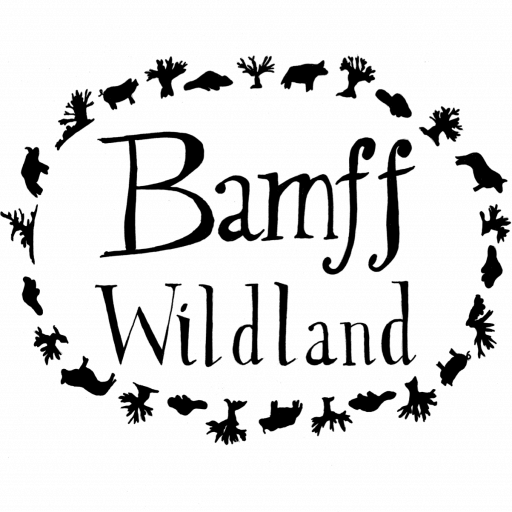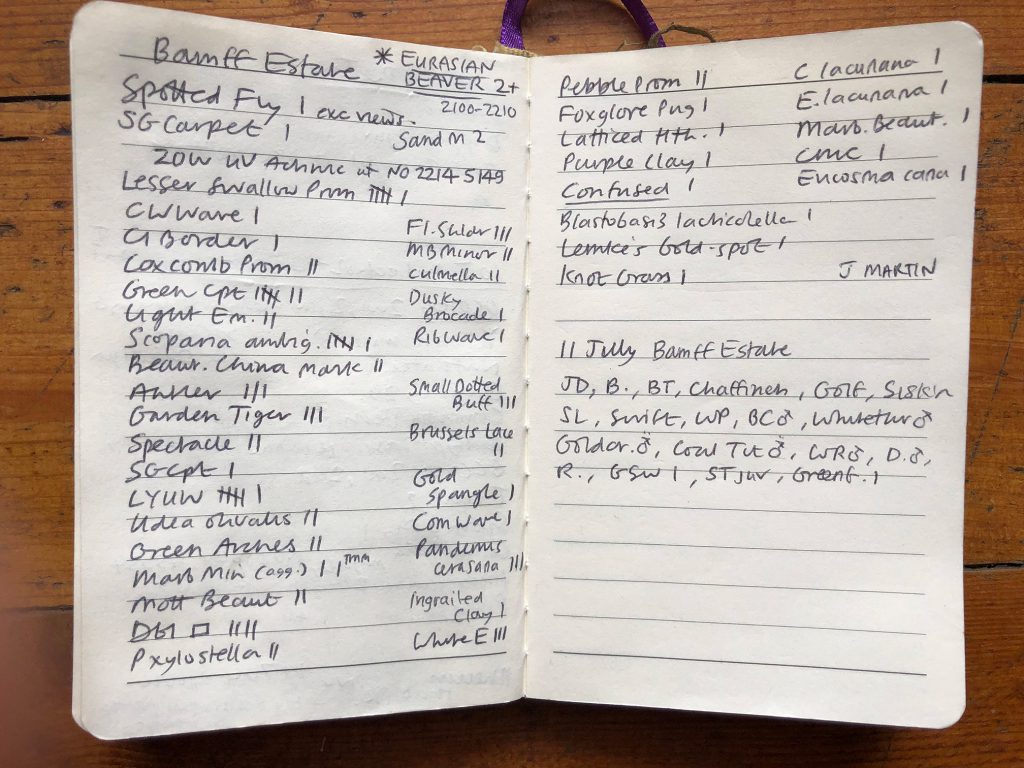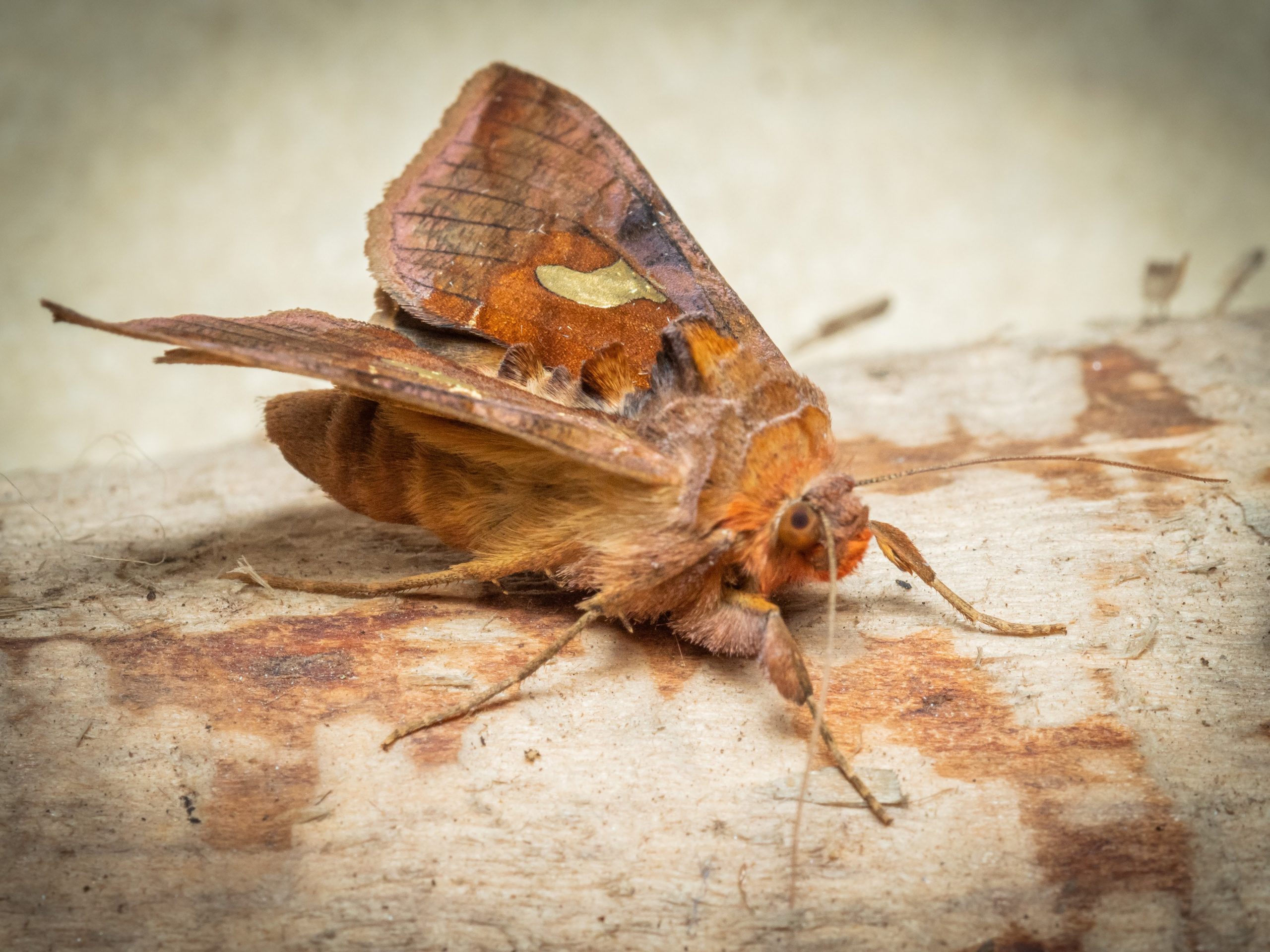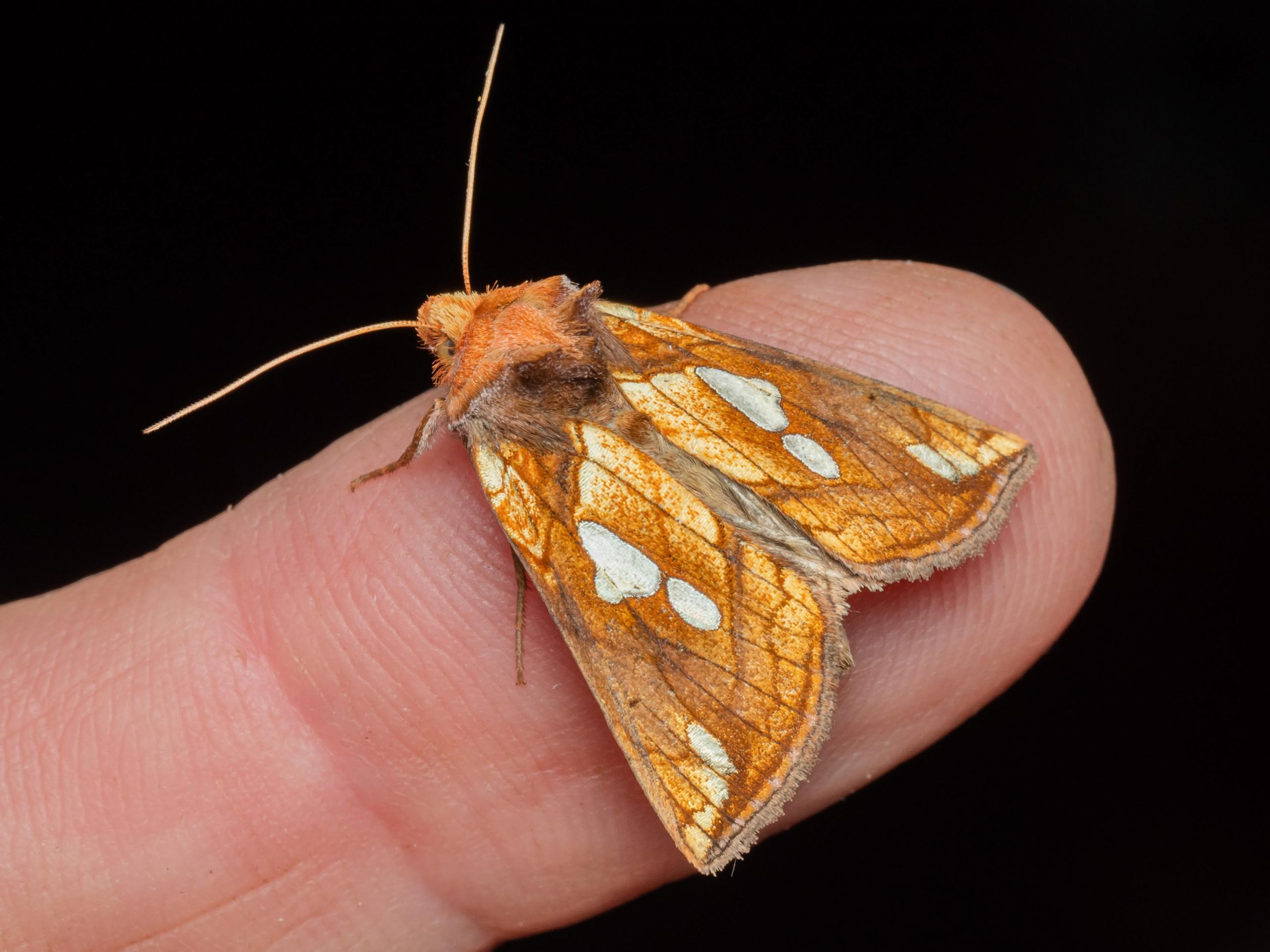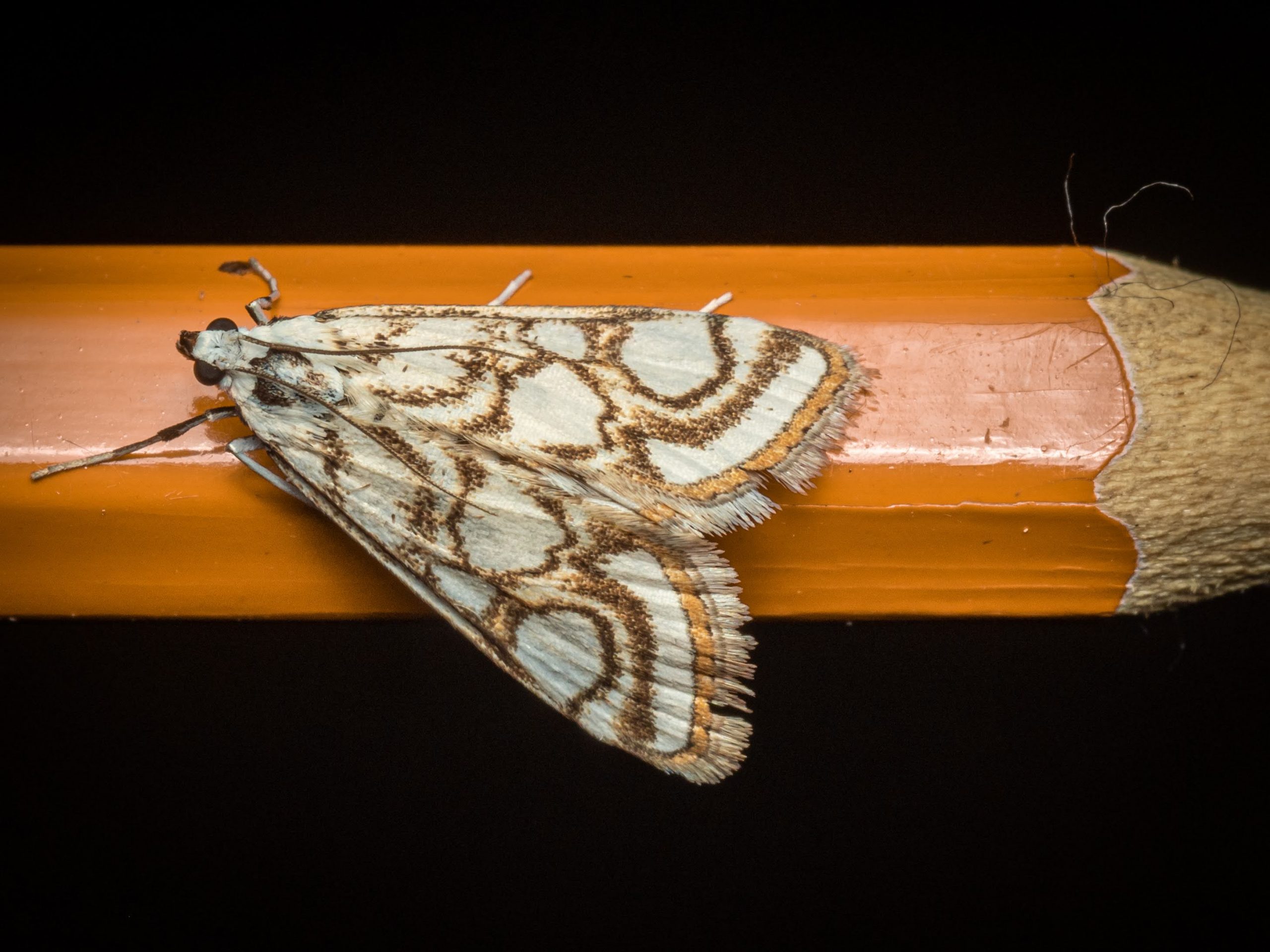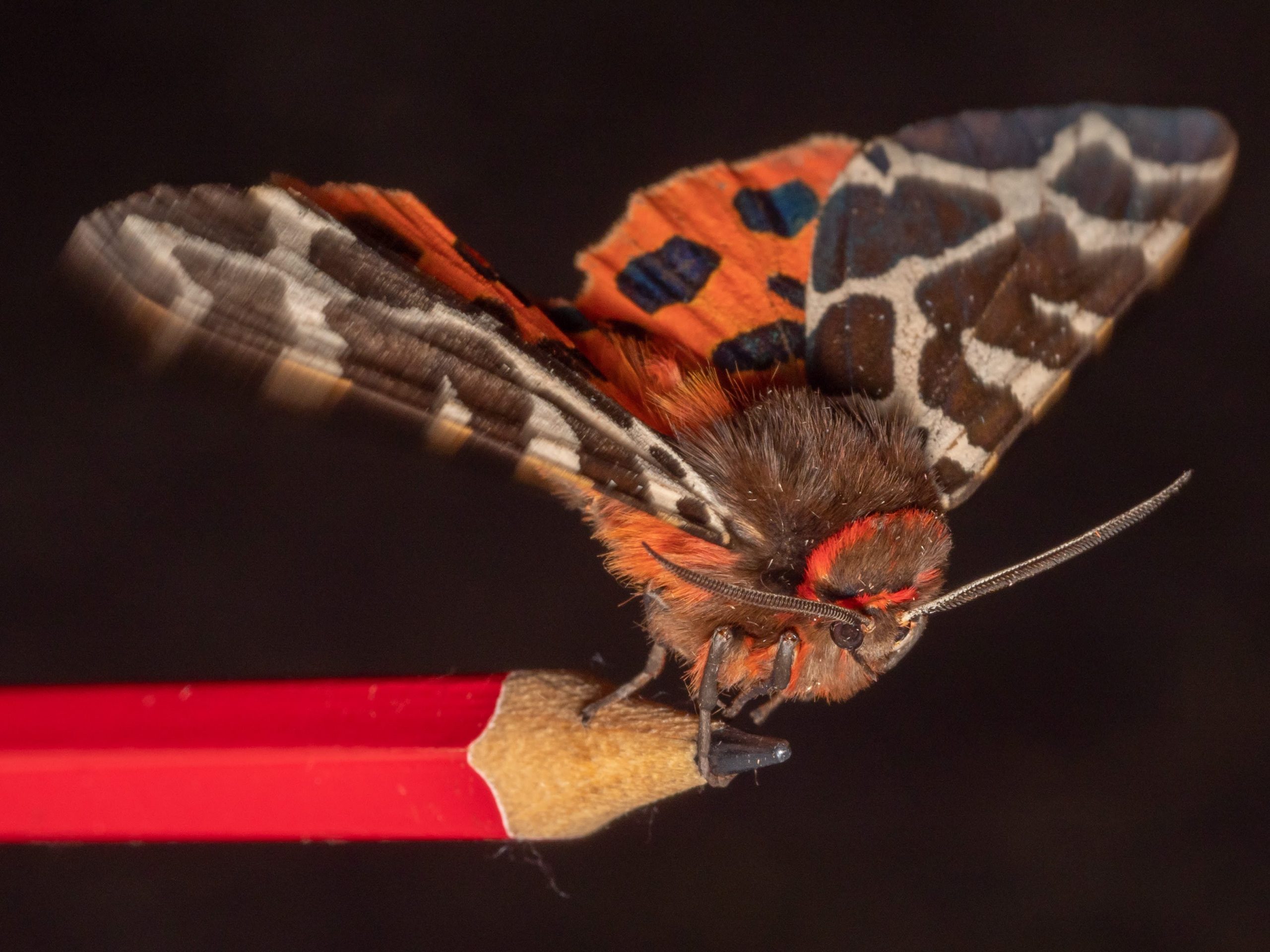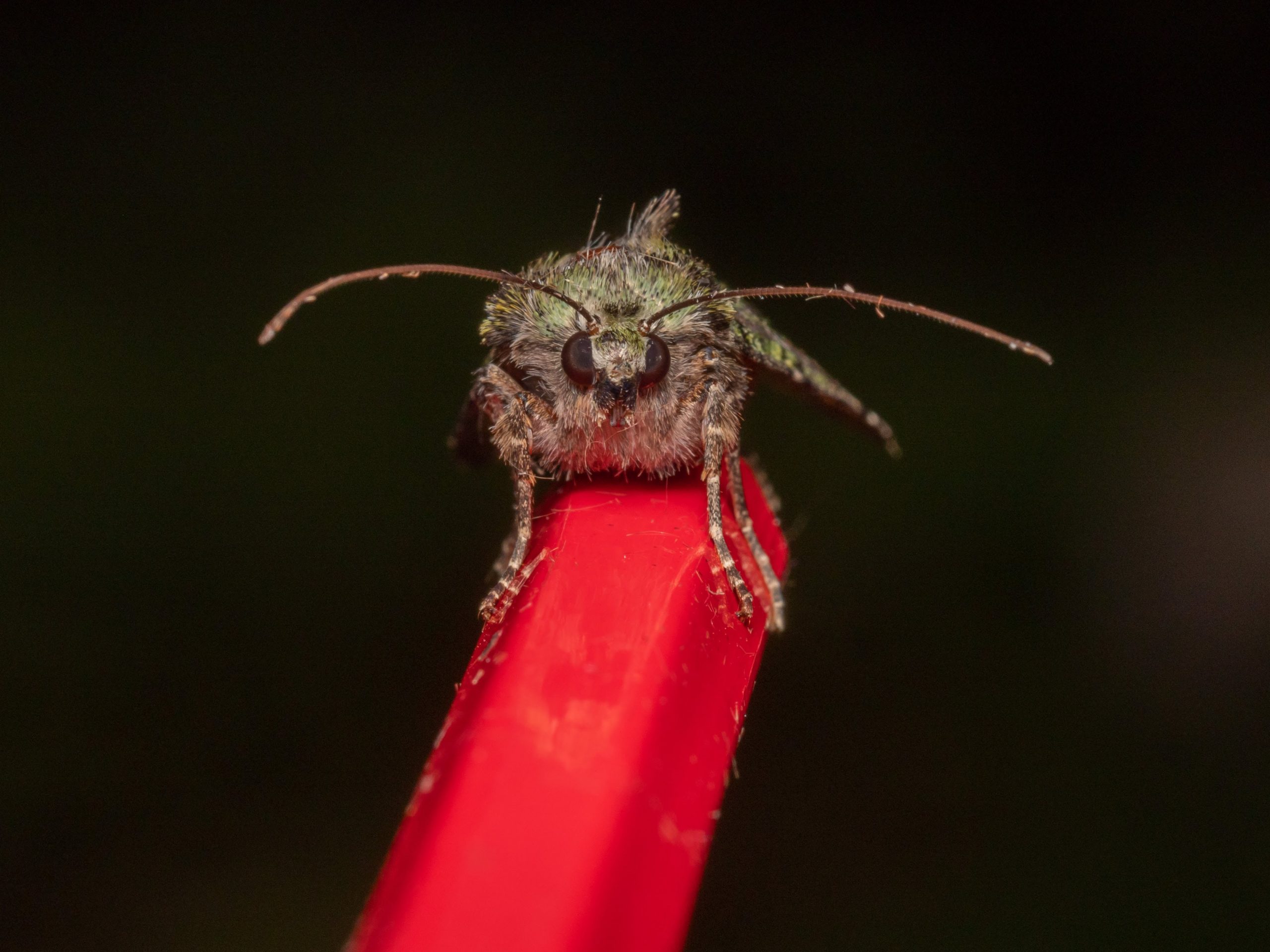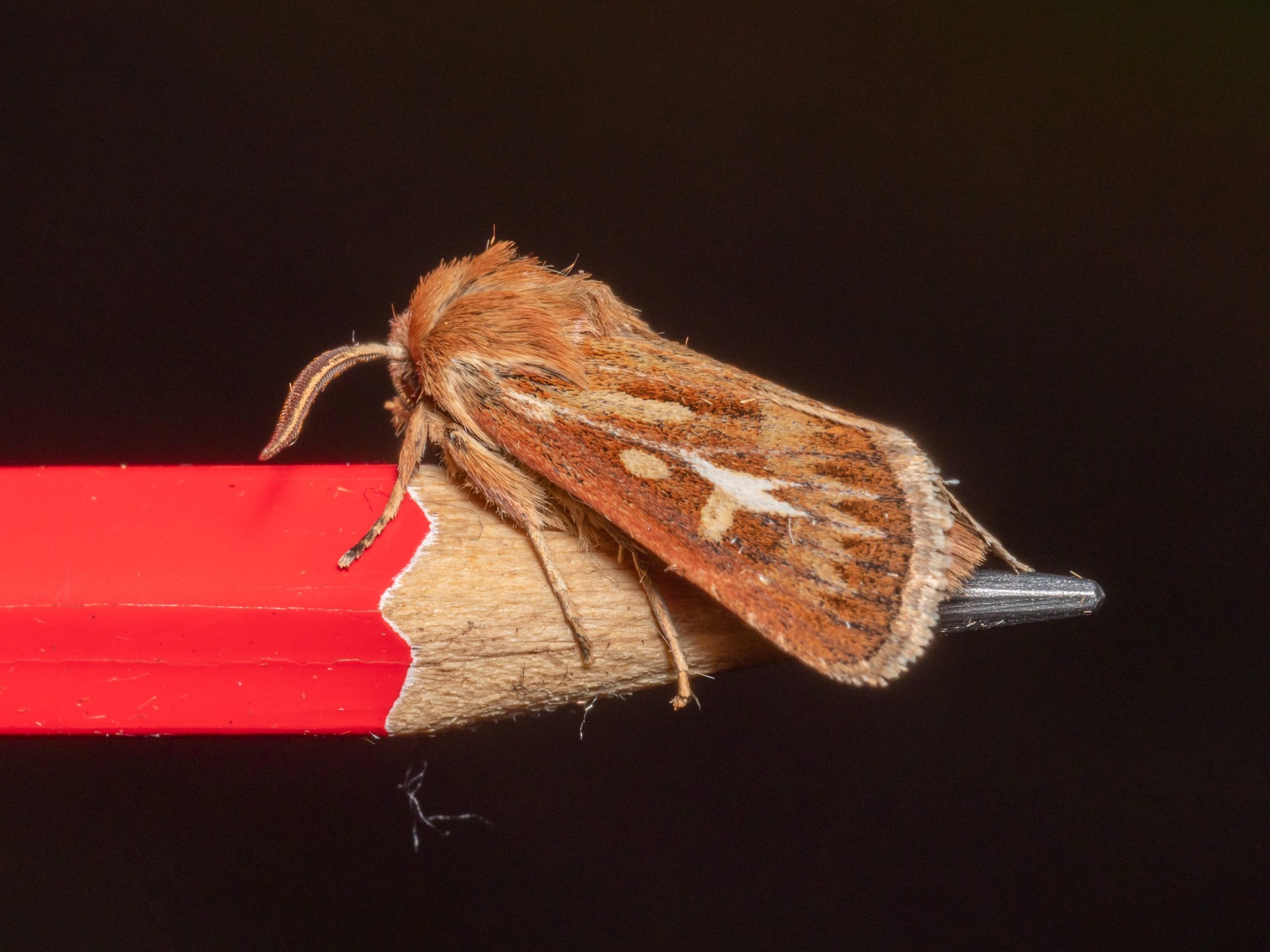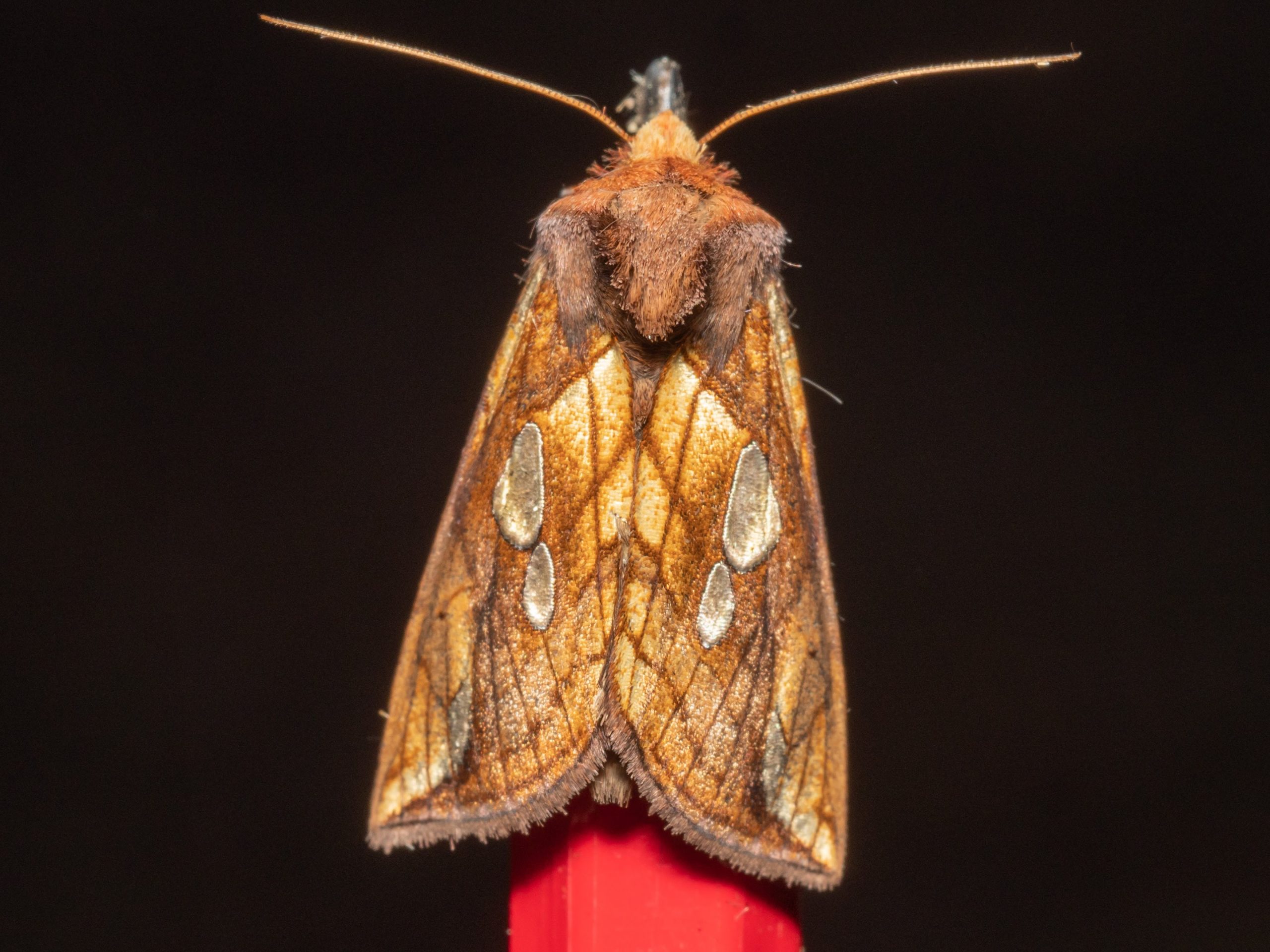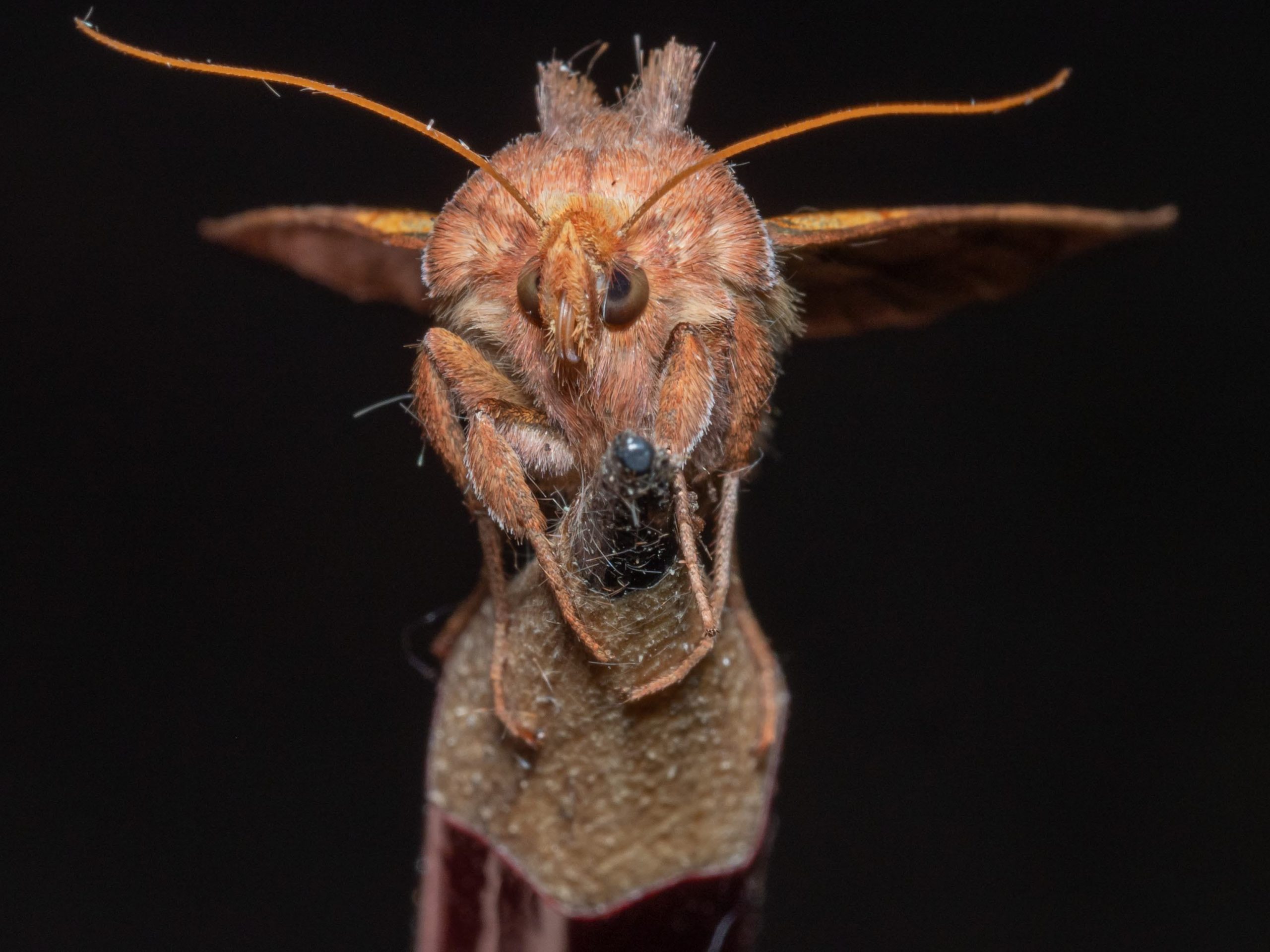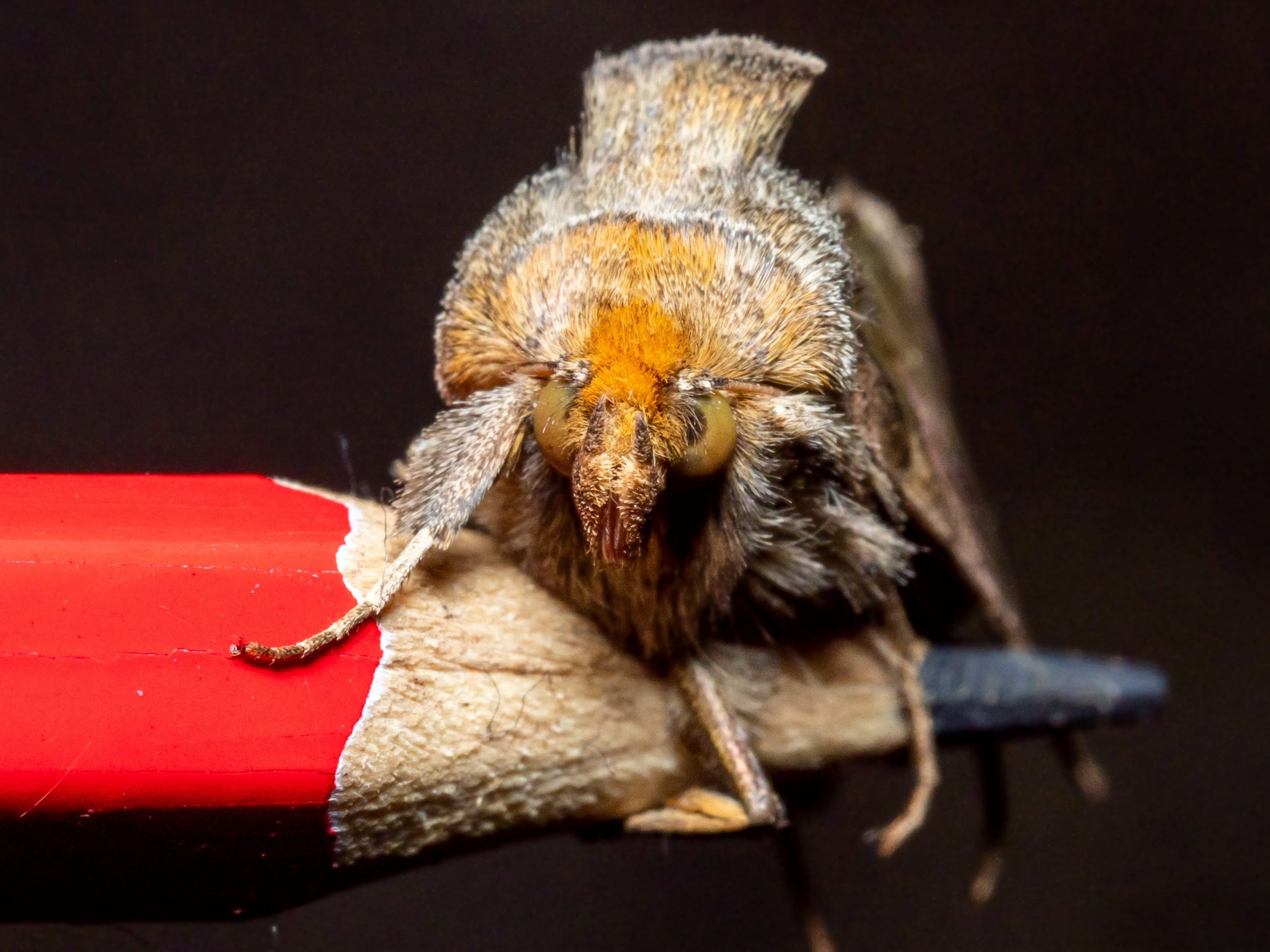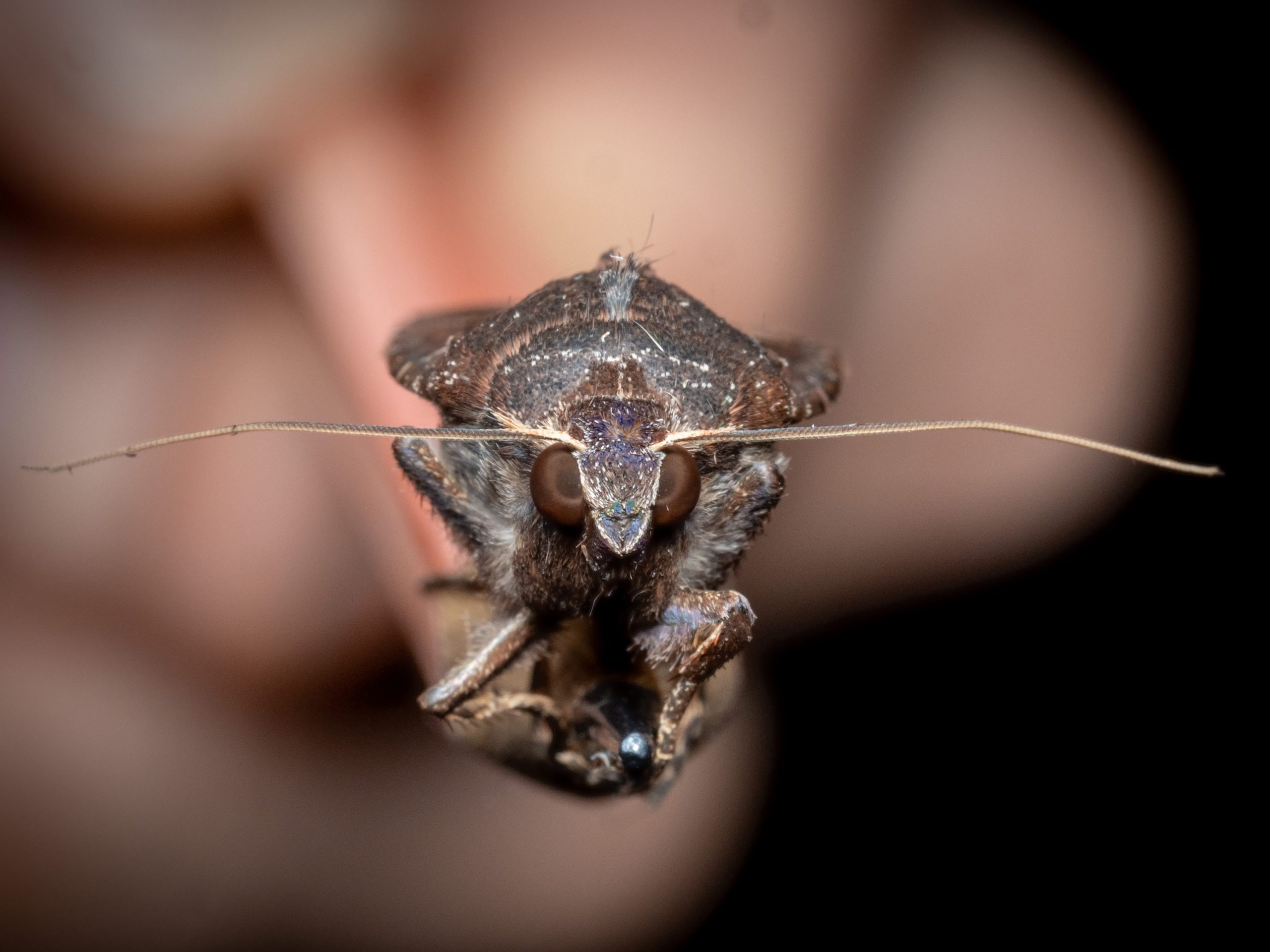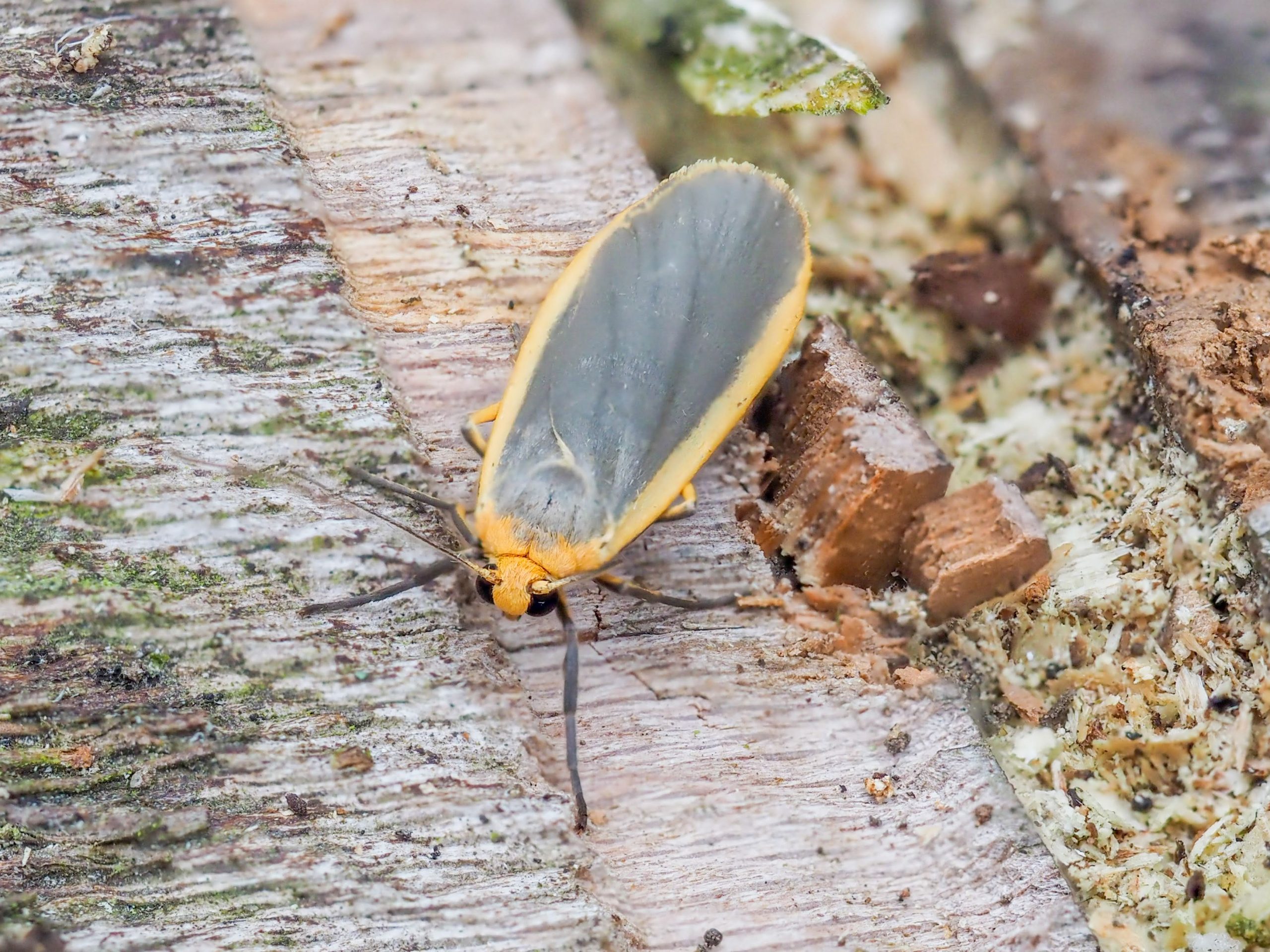Invertebrates
The evolving wetlands at Bamff have proven to have enriched the habitat, providing a greater abundance and variety of insect species than in neighbouring locations where the beavers are absent – often by a factor of 3 to 4. This has had a subsequent effect on insectivorous birds and mammals, where species such as swallows, flycatchers or bats have been spotted in greater numbers feeding at beaver sites, and rarely at all in non-beaver sites.
Research on insects at Bamff from Melanie Sanders can be viewed here.
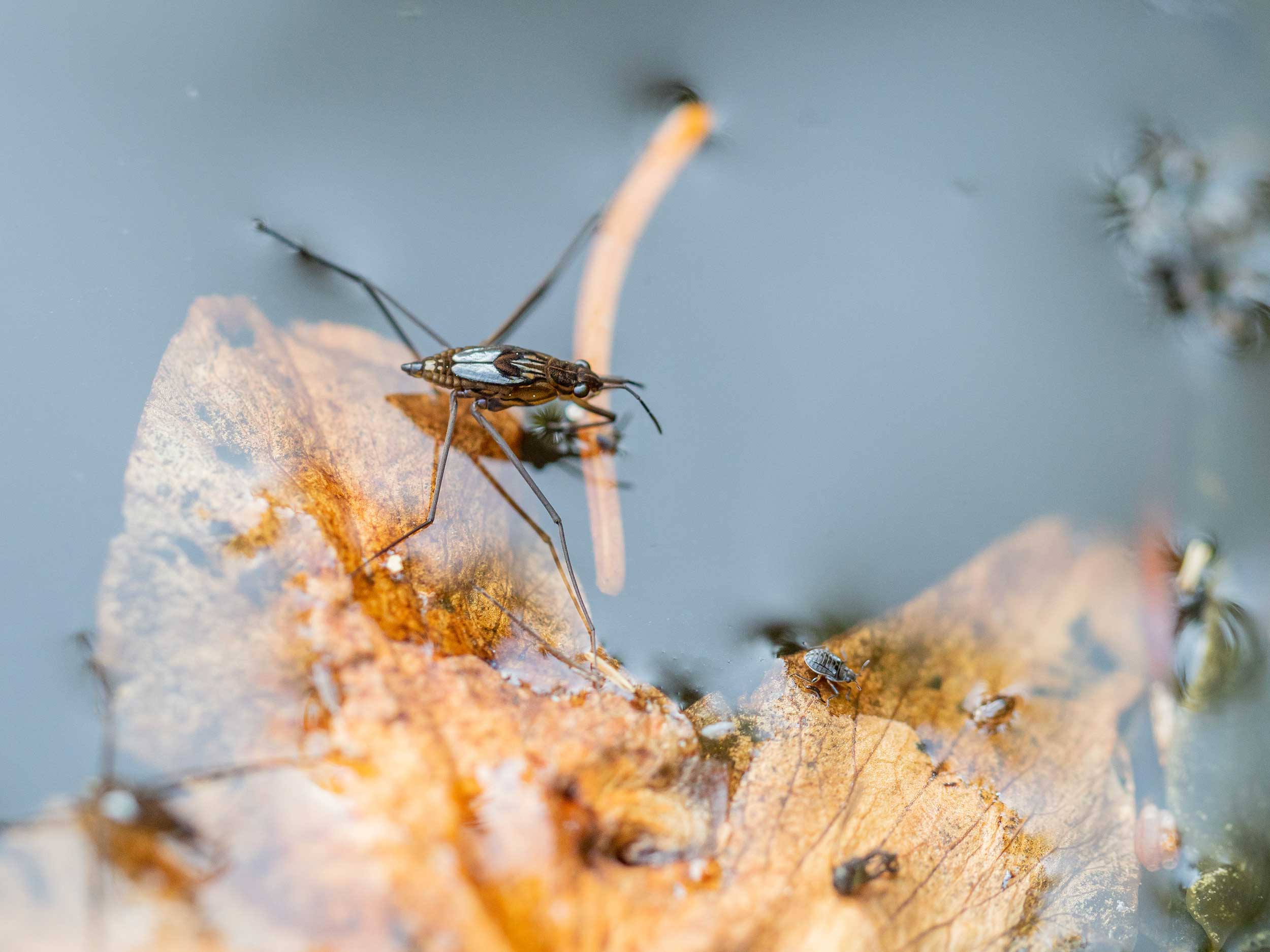
MOTHS
Moth and other insect trappings occur regularly at Bamff – since 2022 PhD student Patrick Cook from the University of Sterling has been regularly studying the impact of rewilded fields on our invertebrates. With positive results.
Below is a list of some of the moth species that have been observed.
Antler
Barred Fruit-tree Tortrix
Beautiful China-mark
Beautiful Golden Y
Brown China-mark
Brown Rustic
Brussels Lace
Burnished Brass
Chimney Sweep
Clouded Border
Clouded-bordered Brindle
Common Carpet
Common Grey
Common Marble
Common Marbled Carpet
Common Name
Common Wave
Common White Wave
Coxcomb Prominent
Dark Arches
Dark Green Fritillary
Diamond-back Moth
Dotted Clay
Double Square-spot
Dusky Brocade
Dwarf Pug
Elephant Hawk-moth
Flame Shoulder
Foxglove Pug
Garden Grass-veneer
Garden Tiger
Gold Spangle
Green Arches
Green Carpet
Grey Tortrix agg.
Hoary Bell
Hook-streak Grass-veneer
Ingrailed Clay
Knot Grass
Large Yellow Underwing
Latticed Heath
Lempke’s Gold-spot
Lesser Swallow Prominent
Light Emerald
Little Grey
London Dowd
Map-winged Swift
Marbled Beauty
Marbled Minor agg.
Middle-barred Minor
Mottled Beauty
Muslin Footman
Olive Pearl
Pebble Hook-tip
Pebble Prominent
Poplar Hawk-moth
Purple Clay
Red-necked Footman
Riband Wave
Ringlet
Shaded Broad-bar
Silver-ground Carpet
Small Dotted Buff
Small Square-spot
Straw Dot
Straw Grass-veneer
The Snout
The Spectacle
White Ermine
Yellow-spot Tortrix

